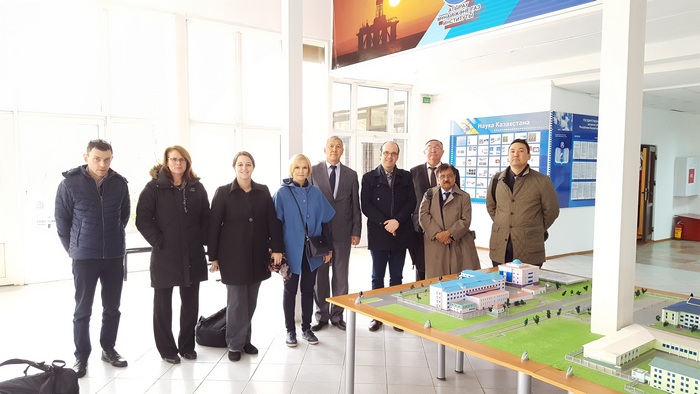STCU News and Announcements
October 17-19, 2016, STCU and a representative of Ukrainian Institute of Geophysics of the NASU participated in the kick off meeting for STCU/ISTC Targeted Initiative (TI) on Radiological Well Logging Source Risk Mitigation in Astana and Atyrau, Kazakhstan.
299/49417 Oct 2016 - 19 Oct 2016

The objective of the TI is to provide scientific and technical support to projects for assessing security, health and environmental risks radiological sources pose in general, with a focus specifically on mitigating risks of radionuclide sources used for well logging in partner countries, especially in Central Asia and the Caucasus. Well logging sources being small, mobile, used worldwide, and transported across international boundaries carry the risk of use in a radiological dispersal device. Mitigating this risk would require tightened regulations, internationally-accepted source-use protocols, use of electronic tagging of sources, and further development and deployment of alternative logging technologies to replace radionuclide-based logging devices. The STCU/ISTC TI will focus on alternative technologies.
- Organization Participants*
- Science and Technology Center in Ukraine (STCU)
- International Science and Technology Center (ISTC)
- Institute of Geophysics National Academy of Sciences of Ukraine (IGPH)
- U.S. Department of Energy (DOE)
- U.S. Embassy in Kazakhstan
- U.S. Pacific Northwest National Laboratory (PNNL)
- MELE Associates, Inc. (MELE). USA
- Ministry for Energy of Kazakhstan, Committee on Atomic and Energy Supervision
- Institute of Nuclear Physics, Kazakhstan
- Nuclear Technology Safety Centre (NTSC), Kazakhstan
- Tengizchrevoil (TCO) in Kazakhstan
- North Caspian Operating Company (NCOC), Kazakhstan
- Atyrau Oil and Gas Institute, Kazakhstan
- Baker Hughes in Kazakhstan
- Schlumberger in Kazakhstan
- The meeting results:
- Reviewed the status of the TI scoping study outlined and reported drafting plan
- Discussed initial plans for the technical review meeting in April
- Identified gaps for information survey and resources for moving forward.